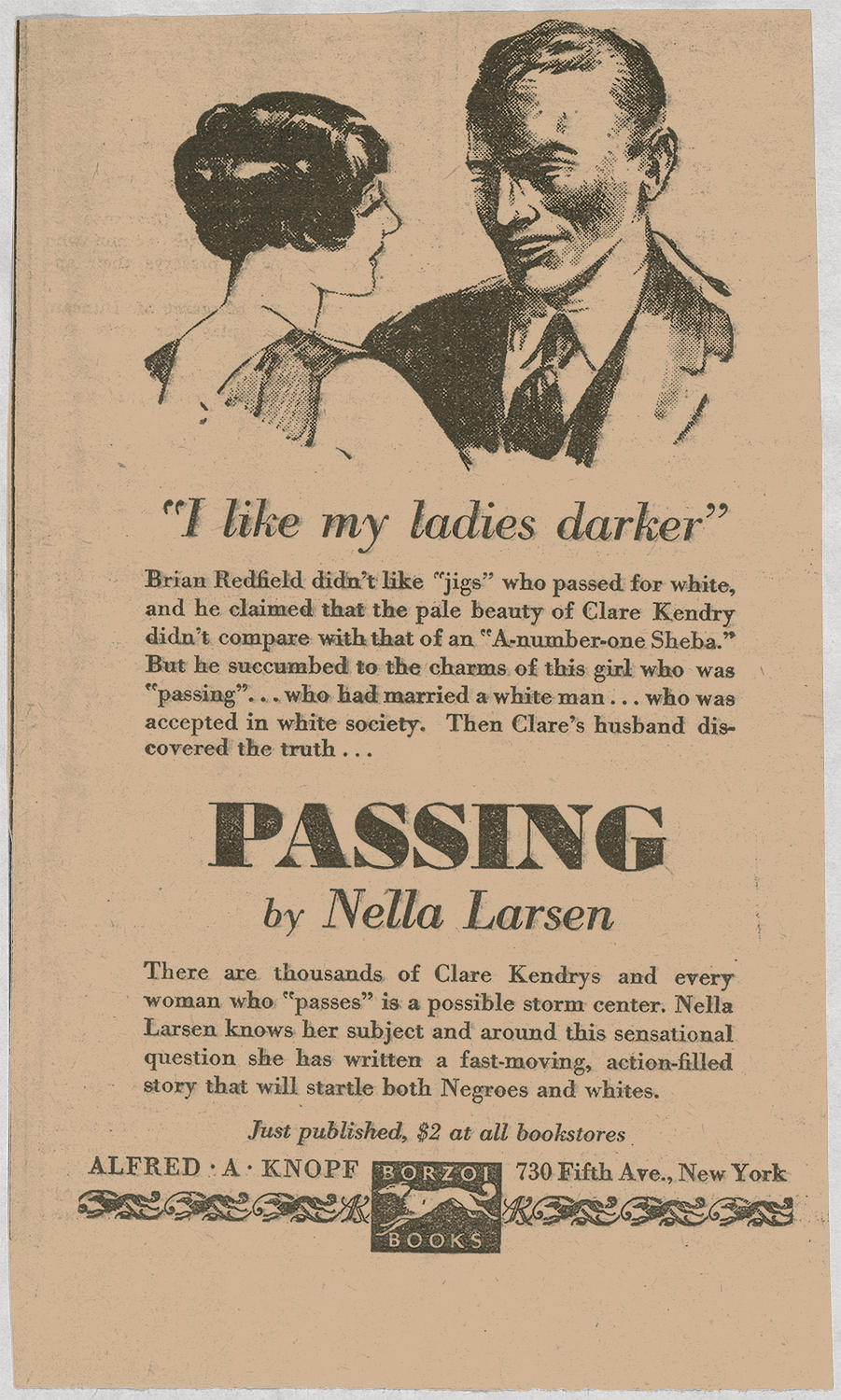One Playwright’s ‘Obligation’ To Confront Race And Identity In The U.S.Posted in Arts, Audio, Literary/Artistic Criticism, Media Archive, Passing, United States on 2015-02-18 03:25Z by Steven |
One Playwright’s ‘Obligation’ To Confront Race And Identity In The U.S.
Code Switch: Frontiers of Race, Culture and Ethnicity
All Things Considered
National Public Radio
2015-02-16
Playwright Branden Jacobs-Jenkins may be only 30 years old, but he’s already compiled an impressive resume. His theatrical works, which look at race and identity in America, have been performed in New York and around the country. Last year, Jacobs-Jenkins won the best new American play Obie Award for two of his works, Appropriate and An Octoroon.
An Octoroon is currently playing at Theater for a New Audience in New York…
…Over the past five years, the young playwright has written a trilogy of highly provocative and fantastical explorations of race in America. In Neighbors, a family of minstrels in blackface moves in next to a contemporary mixed-race family. In Appropriate, a white family discovers their dead father belonged to the KKK. His latest, An Octoroon, is a loose adaptation of a play written more than 150 years ago that deals with identity and race.
“They are all kind of like me dealing with something very specific, which has to do with the history of theater and blackness in America and form,” he says. “And also, my obligation, as a human being with regards to any of these themes.”
It is Jacob-Jenkins’ self-examination that drove Ben Brantley, the chief drama critic for The New York Times, to rank An Octoroon on the top of his best pays list last year. He saw it at Soho Rep, a tiny off-Broadway theater.
“[Jacobs-Jenkins] starts off from self-consciousness, which you would think would be a crippling place for a playwright to begin,” Brantley says.”But his self-consciousness isn’t just particular; it’s national, it’s universal. And it’s the self-consciousness of realizing that we don’t have the vocabulary, the tools to discuss race.”
The play, based on a 1859 melodrama by the Irish-Anglo playwright Dion Boucicault, tells the story of a young man who’s about to inherit a plantation and falls in love with a woman who is an octoroon — seven-eighths white, one-eighth black.
Director Sarah Benson points out that, in the original, all the parts had to be played by white actors…
Read the entire article here. Listen to the story here. Download the audio here. Read the transcript here.


